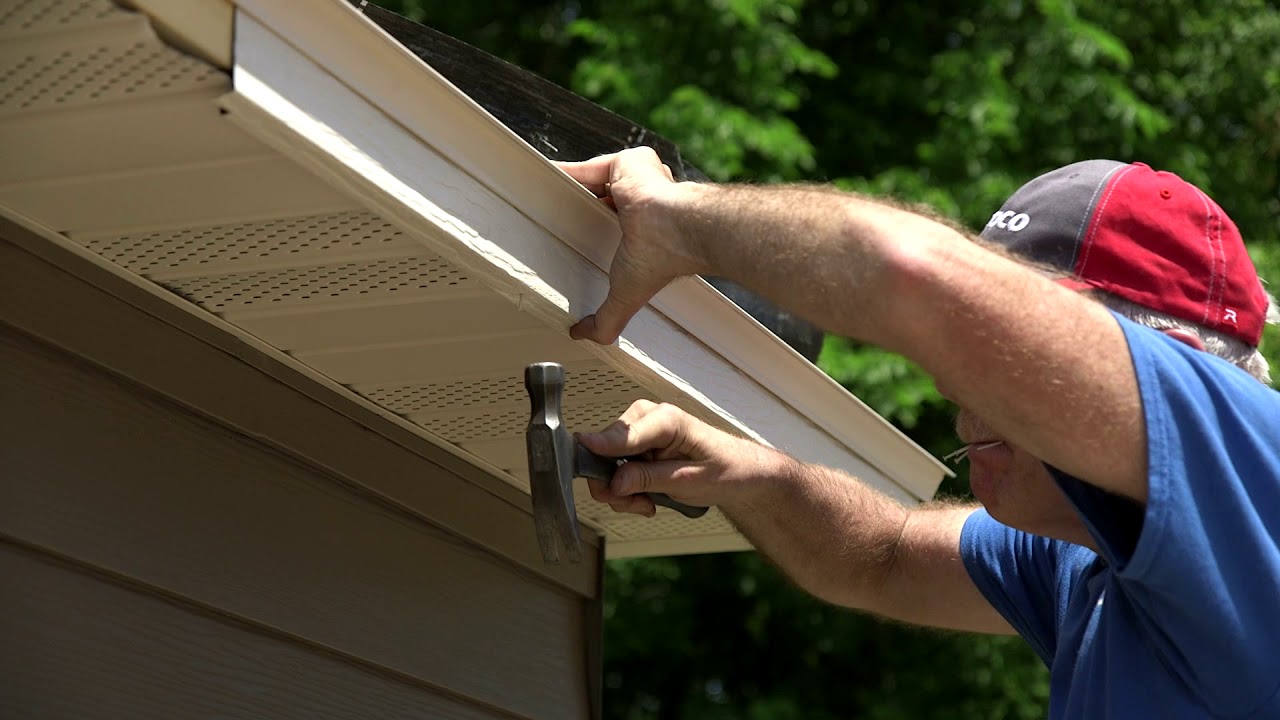How to Identify Water Damage in Your Soffits and Fascia

Strong 8k brings an ultra-HD IPTV experience to your living room and your pocket.
Water damage can be one of the most devastating issues for any home, especially when it affects structural components like soffits and fascia. These elements of your roofing system are responsible for ensuring proper ventilation and protecting your roof structure from external elements. So, it's crucial to identify water damage early before it leads to costly repairs or even more severe structural damage.
In this article, we’ll explore how to identify water damage in your soffits and fascia, what causes it, and how to address the issue before it worsens.
What Are Soffits and Fascia?
Before diving into the identification of water damage, it’s essential to understand what soffits and fascia are and their functions.
Soffits are the panels located beneath the roofline that connect the roof to the exterior wall of your house. Soffits allow for proper ventilation in the attic, helping prevent moisture buildup and mold growth.
Fascia is the horizontal board running along the edge of the roof. It’s attached directly to the roof trusses and supports the gutters, protecting the area where the roof meets the walls.
Both soffits and fascia play a crucial role in maintaining the integrity of your roofing system.
How Does Water Damage Affect Soffits and Fascia?
Water damage occurs when excess moisture seeps into the soffit or fascia, weakening the material and causing it to decay. Prolonged exposure to water can lead to rot, mold growth, and even structural failure in severe cases.
Common causes of water damage to soffits and fascia include:
- Clogged or damaged gutters: Water overflows from gutters that can no longer channel water properly.
- Leaking roofs: A leaking roof or damaged shingles can allow water to seep into the soffit and fascia.
- Condensation: Poor attic ventilation or inadequate insulation can cause condensation to accumulate and lead to water damage.
Signs of Water Damage in Soffits and Fascia
Recognizing the early signs of water damage in your soffits and fascia can save you from expensive repairs down the line. Here are some key indicators to watch for:
1. Staining or Discoloration
Before making any repairs, determine the source of the water damage. Check for any clogged gutters, leaks in the roof, or improper ventilation in the attic. If you don’t address the root cause of the problem, the water damage is likely to recur, making soffits and fascia repair more frequent and costly. If your roof also shows signs of wear, a roof restoration may be needed to address underlying issues that could contribute to water damage.
2. Warping or Sagging
If the soffit or fascia appears to be sagging or warped, it’s a clear sign that water has penetrated the material and caused it to soften. This can happen when wood or other porous materials absorb moisture over time. A sagging soffit or fascia compromises the structural integrity of your roofing system and may indicate the need for a replacement.
3. Mold or Mildew Growth
Moisture trapped in soffits or fascia can encourage the growth of mold and mildew. If you notice a musty odor or see visible mold on the underside of your soffits or along the fascia, it’s a sign of serious water damage. Mold can spread quickly, and it can also affect the health of the residents in your home.
4. Soft, Rotted Wood
Another obvious indicator of water damage is wood that feels soft to the touch or crumbles easily. If you gently press on the fascia or soffit and it gives way or feels spongy, it has likely been affected by water damage. This can be a sign that the wood has begun to rot, which compromises the structural integrity of your roof.
5. Leaking in the Attic or Ceiling
Water stains or drips inside your attic or ceiling are signs that water has traveled from the soffit and fascia to the interior of your home. This can occur if the soffits have deteriorated to the point where they can no longer protect your home from the elements. It’s important to inspect the attic or upper walls for water leaks, as they can lead to further damage if left untreated.
6. Puddles Around the Foundation
If water is leaking from your soffits or fascia, it could also accumulate around the foundation of your home. If you notice puddles or pooling water around your home’s exterior, particularly after rainfall, there may be an issue with your soffits and fascia that requires attention.
How to Repair Water Damage in Soffits and Fascia
1. Inspect the Source of Water
2. Replace Damaged Materials
3. Seal the Joints
4. Improve Ventilation
5. Regular Maintenance and Inspections
Conclusion
Water damage to soffits and fascia can cause significant problems for homeowners if left unchecked. By identifying the signs of damage early—such as staining, warping, mold growth, and soft wood—you can prevent further deterioration and avoid expensive repairs. If you do find water damage, taking the necessary steps to repair it, including replacing damaged materials, sealing joints, and improving attic ventilation, can help restore your home’s protective features.
Note: IndiBlogHub features both user-submitted and editorial content. We do not verify third-party contributions. Read our Disclaimer and Privacy Policyfor details.


